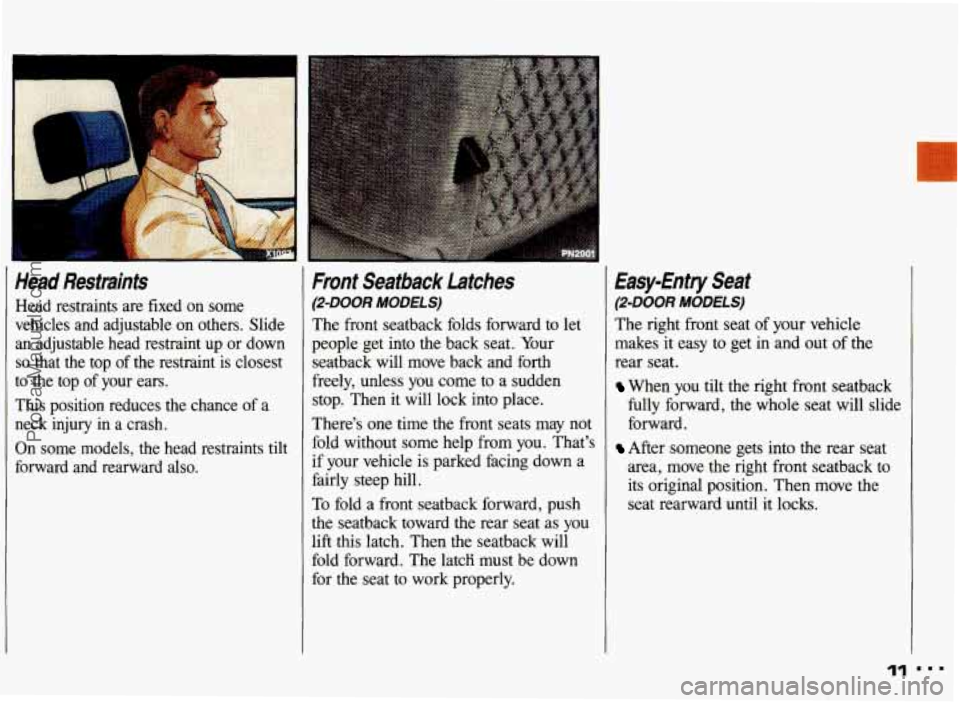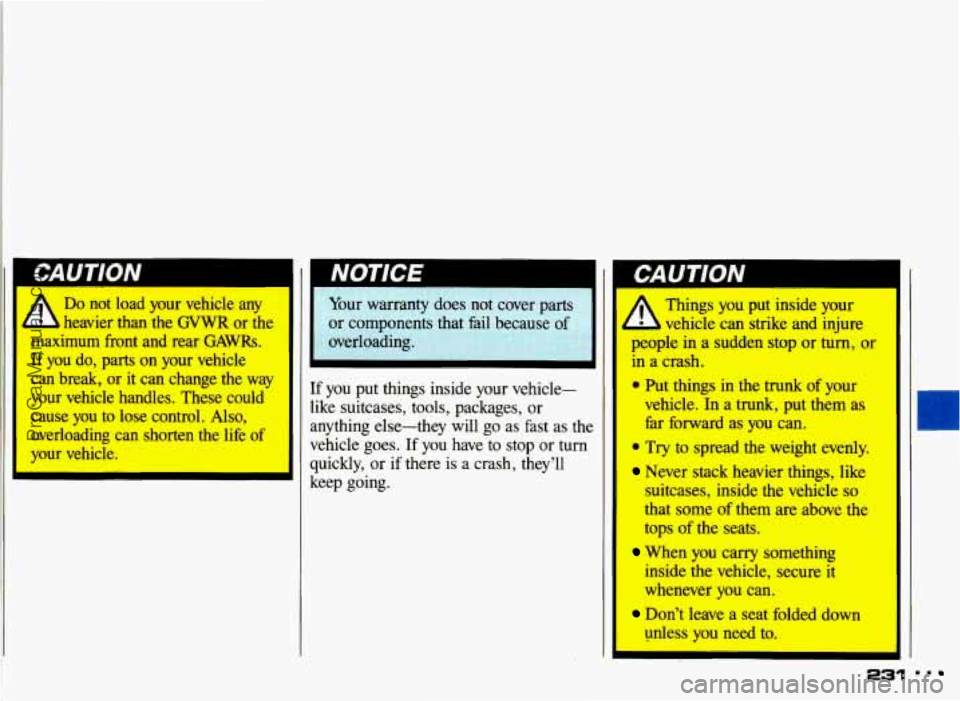Page 12 of 306

Head Restraints
Head restraints are fixed on some
vehicles and adjustable on others. Slide
an adjustable head restraint up or down
so that the top of the restraint is closest
to the top of your ears.
This position reduces the chance of a
neck injury in a crash.
On some models, the head restraints tilt
forward and rearward
also.
Front Seatback Latches
(2-DOOR MODELS)
The front seatback folds forward to let
people get into the back seat. Your
seatback will move back and forth
freely, unless you come to a sudden
stop, Then it will lock into place.
There's one time the
front seats may not
fold without some help from you. That's
if your vehicle is parked facing down a
fairly steep hill.
To fold a front seatback forward, push
the seatback toward the rear seat as you
lift this latch. Then the seatback will
fold forward. The latcH must be down
for the seat to work properly.
Easy-Entry Seat
(2-DOOR MODELS)
The right front seat of your vehicle
makes it easy to get in and out of the
rear seat.
When you tilt the right front seatback
fully forward, the whole seat will slide
forward.
After someone gets into the rear seat
area, move the right front seatback to
its original position. Then move the
seat rearward until it
locks.
ProCarManuals.com
Page 13 of 306
Seats & Safety 6elts
Easy-Entry Seat (CONT.)
4
If an easy-entry right fronl
seat isn’t locked,
it can move.
In a sudden stop or crash, the
person sitting there could be
injured. After you’ve used it, be
sure to push rearward
on an easy-
entry seat
to be sure it is locked.
I
I
To get out, again tilt the seatback fully
forward.
12
Split Fold-Down Rear Seat
(OPTION)
To Open:
Pull forward on the seat tab.
To Close:
Push the seatback up to its original
position.
N
Push the seatback solidly up against the
back plate to ensure inertial latch will
hook and lock securely during sudden
stops.
Safety Belts:
They’re For Everyone
This part of the manual tells you how to
use safety belts properly. It also tells you
some things you should not do with
safety belts.
ProCarManuals.com
Page 232 of 306

IIC
A
Do not load your vehicle any
heavier
than the GVWR or the
maximum
front and rear CiAWRs.
If you do, parts on your vehicle
can
break, or it can change the way
your vehicle handles. These could
cause you to lose control. Also,
overloading
can shorten the life of
your vehicle.
I Your warranty does not cover parts 1
I
or component
overloading.
If you put things inside your vehicle-
like suitcases, tools, packages,
or
anything else-they will go as fast as the
vehicle goes.
If you have to stop or turn
quickly, or if there is a crash, they’ll
keep going.
A
CAUTION
Things you put inside your I
vehicle can strike and injure
people in a sudden stop or turn, or
in a crash.
0 Put things in the tnuik of your
vehicle. In a trunk, put them as
far forward as you can.
* Try tu spread the weight evenly.
Never stack heavier things, like
suitcases, inside the vehicle so
that some of them are above the
tops
of the seats.
When you carry something
inside
the vehicle, secure it
whenever
you can.
Don’t leave a seat folded down
unless you
need to. 1:
iE31 ’
ProCarManuals.com